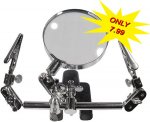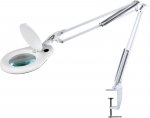Little pins
As others say, a magnifying glass and means of clamping the work may be the way to go.
Then who says being myopic is all bad. Rumour has it that us myopic types (that's me

) find that for a period in mid/later-life we can in fact see the small things better as the eyesight varies thru myopic to better on the way to really bad.
I must (luckily for now) be in that mid life state

as at the moment as I have been soldering SOIC8 (small outline 8 pin IC's) surface mount chips to adapters with a standard soldering iron without problems. I first tin the IC leads and the board, carefully place the IC then reheat each pin to make the bond/conenction.
Mind you I do need a magnifying glass to read the text on this small chips.



